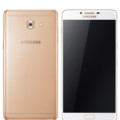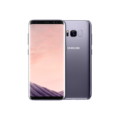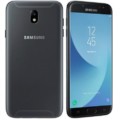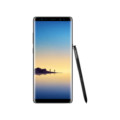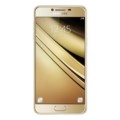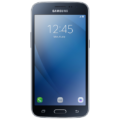Samsung Galaxy A13 5G
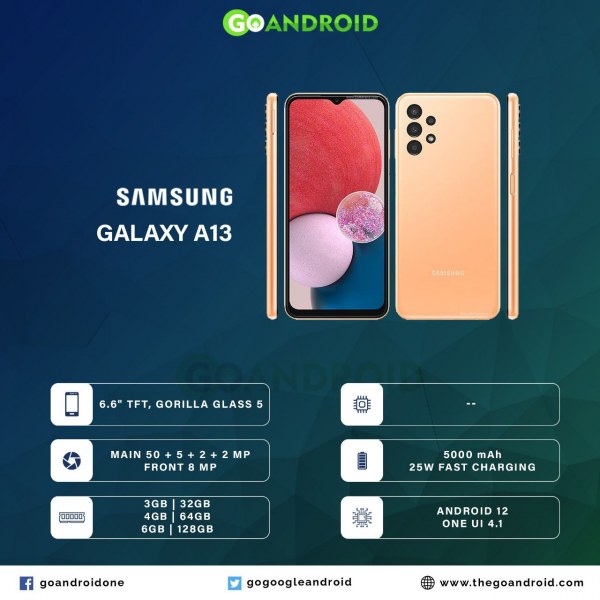

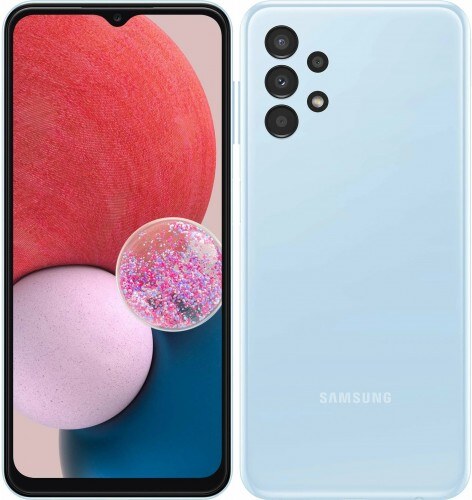
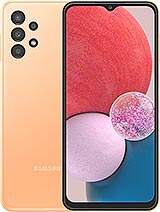
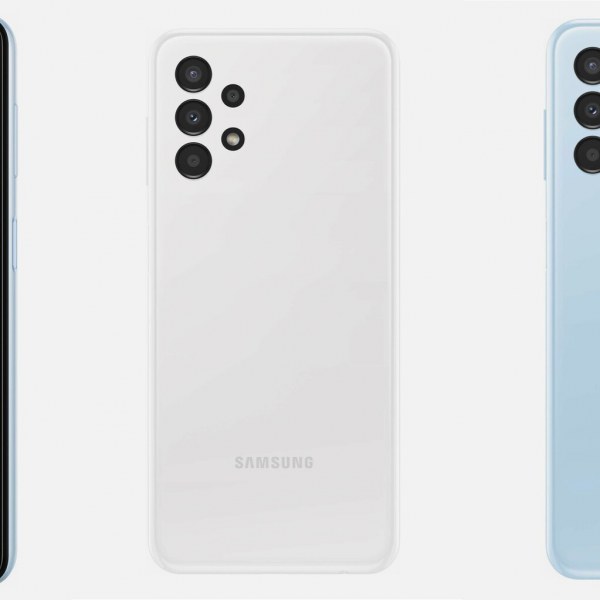









-
SoC: Qualcomm SM8350 Snapdragon
-
RAM: 3 GB/ 4GB /6GB
-
Storage: 32 GB/ 64GB /128GB
-
Display: TFT LCD
-
Camera: 8 MP/ 50 MP (wide), 5 MP (ultrawide), 2 MP (telephoto), 2MP (macro)
-
OS: Android 12
Samsung has announced its mid-ranger flagship device in the market with the name Samsung Galaxy A13 5G which comes with high-end features and specs. The phone float in the market with 6.6 inches, 104.9 cm2 Thin Film Transistor Liquid Crystal Display which gives you a crisp and clear picture quality, reduces smear, and offers eye protection. It supports up to 120Hz (refresh rate) with 1B colors and has a ~83.2% screen-to-body ratio. The handset holds up HDR10+, 1 Billion color bionic display with 430 nits (typ), and 600 nits (HDR) display brightness.
Specifications of the Samsung Galaxy A13 5G in detail:
Not only this, this handset is protected with Corning® Gorilla® Glass from the front side and at the back also. Even more, it supports IP68 dust/water resistance (up to 1.5m for 30 mins) which makes the device stronger. Apart from this, it supports Single SIM (Nano-SIM) or Dual SIM (Nano-SIM, dual stand-by). It has a display resolution of 1080 x 2408 pixels with a 20:9 aspect ratio while having a pixel density of 400 PPI. The dimension measures 165.1 x 76.4 x 8.8 mm (6.5 x 3.01 x 0.35 in) with a weight of 195 g (6.88 oz).
The Galaxy A13 5G boots One UI 4.1 based on Android 12. The device is powered by Octa-core (2.2 GHz & 2.0 GHz) processor. The phone is available in three storage options which are 32 GB/ 64 GB/ 128 GB of eMMC 5.1 internal memory with 3GB RAM/4 GB RAM/6 GB RAM. In addition, the inner recollection can be expandable up to 128 GB and 256 GB via microSDXC cards by using a shared dedicated slot.
As far as the camera is concerned, the Samsung Galaxy A13 5G packs a quad-camera module with a 50 MP wide lens with f/1.8 aperture, an 5 MP with f/2.2 aperture FOV 118° ultrawide angle lens, a 2 MP depth lens with f/2.4 aperture, and a 2 MP macro lens with f/2.4 aperture. Furthermore, the primary camera is capable of recording 1080p@30fps gyro-EIS; HDR, 10‑bit videos. Besides this, the device has LED flash, HDR, panorama, PDAF, OIS, Night, Pro, Panorama, Portrait, Time-lapse, Slow-motion, Movie, Long exposure, Dual-view video, Sticker, and Google Lens attributes.
On the other side, the selfie camera modules an 8 MegaPixel wide lens with an f/2.2 aperture. It also supports 1080p@30fps, Panorama, and gyro-EIS video record capability as a rear camera. Even it hold an upfront video filter, Panoramic, Portrait, Night, Time-lapse, Dual-view video, and Sticker characteristic. This Samsung Galaxy A13 consists of Li-Po 5000 mAh capacity non-removable battery. The phone has a feature of fast charging with 25W which gives 100% charging within just 45 min (advertised) which is quite superb. The large battery has enough power to easily get the Xiaomi fans through the day.
Color and Price
The new model Samsung Galaxy A13 5G comes with high-end features and amazing specs. The phone is available in various different colors i.e Black, White, Peach, and Blue in the mobile industry with a mid-grade value of About $249.99 which can be 19,061.79 in Indian Price.
Sensors on the phone:
- Fingerprint sensor,
- Optical sensor,
- Proximity sensor,
- Accelerometer,
- Gyroscope, and
- Pedometer.
Connectivity options include:
- Wi-Fi 802.11 a/b/g/n/ac/6, dual-band, Wi-Fi Direct, hotspot,
- Bluetooth- 5.1, A2DP, LE, aptX HD, aptX Adaptive,
- GPS with A-GPS, GLONASS, GALILEO, BDS, QZSS,
- Audio Jack- Unspecified,
- Loudspeaker – Yes, with stereo speakers, and
- USB- USB Type-C 2.0, USB On-The-Go
Samsung Galaxy A13 5G - Specs
Network
-
5G Network
-
4G Network
-
3G Network
-
2G Network
Design
-
Type Design Type called form factor refers to a mobile phone's size, shape, and style as well as the layout and position of major components of phone. There are three major form factors seen in mobile phones => bar phones, folding phones and sliding phones.Bar
-
BuildTFT LCD
-
Dimensions165.1 x 76.4 x 8.8 mm (6.5 x 3.01 x 0.35 in)
-
Weight195 g (6.88 oz)
-
WaterproofSplash and dust resistant
-
ColorsBlack, White, Peach, and Blue
-
SIM SIM (Subscriber Identity Module) is a small card that contains mobile network subscriber's account information. This allows the phone using the card to attach to a mobile network. The SIM card is most commonly associated with GSM and UMTS mobile networks. Moving a SIM card from one phone to another allows a subscriber to switch mobile phones without having to contact their mobile network carrier. SIM cards can also be used by a phone to store limited amounts of data, such as phone numbers and text messages.Dual SIM (Nano-SIM, dual stand-by)
Display
-
Display Type Display Technology => A number of display technologies and types used in mobile phones => TFT (Thin Film Transistor), IPS (In-Place Switching), OLED (Organic Light Emitting Diode), AMOLED (Active-Matrix Organic Light-Emitting Diode), Super AMOLED (an even advanced version of AMOLED), Resistive Touchscreen (Resistive touchscreens contain two layer of conductive material with a very small gap between them which acts as a resistance), Capacitive Touchsceen (Capacitive touchscreen technology consists of a layer of glass coated with a transparent conductor)TFT LCD
-
Size6.6 inches, 104.9 cm2
-
Resolution1080 x 2408 pixels
-
Display Colors Display Colors is refers to the number of different shades of colors that the screen is capable of displaying => 64K colors, 256K colors and 16 million colors, Obviously 16M is highest available range of colors and better than others.1B colors
-
Pixel Density Pixel Density (PPI) is refers to the concentration of pixels on a particular display, measured in pixels per inch (ppi). Pixel density is calculated by dividing the diagonal pixel resolution of a display by its diagonal size, higher pixel density better display quality.400 ppi
-
Touch ScreenYes, up to 10 fingers
-
Display Protection Display Protection => Gorilla Glass is a special alkali-aluminosilicate glass shield with exceptional damage resistance that helps protect mobile displays from scratches, drops, and bumps of everyday use, It is always better to go for a smartphone with Gorilla Glass for that added protection and peace of mind.Corning Gorilla Glass
-
Featuresup to 120Hz (refresh rate) with 1B colors and has a ~83.2% screen-to-body ratio, HDR10+, 1 Billion color bionic display with 430 nits (typ), and 600 nits (HDR) display brightness.
Software
-
Operating System OS => Every computer system run on a base software called Operating System (OS). Operating System controls all basic operations of the computer (such as smartphone, PDAs, tablet computers and other handheld devices). The Operating System allows the user to install and run third party applications (apps), apps are used to add new functionality to the device.Android 12
-
Skin UI or user interface of a device is the look and feel of the on-screen menu system. How it works, its color scheme, how it responds to button presses, all of these things are part of the user interface.One UI 4.1
Hardware
-
CPU CPU (Central Processing Unit) mostly known as processors, CPU processes instructions in order to carry out certain functions that make your device operate properly. Processors are often described as the brain of computers, smartphones and tablets, Smartphones and tablets rely on processors to carry out their every task, Processors are an incredibly important factor in selecting any type of computing device, including your smartphone.Octa-core (2.2 GHz & 2.0 GHz)
-
RAM (Memory) RAM (Random Access Memory) is a type of computer memory that can be accessed randomly, any byte of memory can be accessed without touching the preceding bytes that allows information to be stored and accessed quickly from random locations. RAM is the most common type of memory found in computer systems, smartphones, tablets and other electronic devices.3 GB/ 4GB/ 6GB
-
Internal Storage Internal Storage is a data storage space (flash memory) mostly used in smartphones, tablets and other electronic devices where operating system, apps, music, photos, videos, files and other user data Is stored.32 GB/ 64GB/ 128GB
-
Card Slot Memory Card Slot is a special slot for inserting a memory card. Memory cards allow you to expand the phone's built-in memory, A memory card (sometimes called a flash memory card or a storage card) is a small storage medium used to store data such as text, pictures, audio, and video, for use on small, portable or remote computing devices such as mobile phones, mp3 players, digital cameras.Yes, up to 128 GB
-
Sensors Sensors are electronic components that detects and responds to some type of input from the physical environment. The specific input could be light, heat, motion, moisture, pressure and location, The output is generally a signal that is converted to use in computing systems, a location sensor, such as a GPS receiver is able to detect current location of your electronic device.Fingerprint sensor,
Optical sensor,
Proximity sensor,
Accelerometer,
Gyroscope, and
Pedometer.
Camera
-
Primary Camera is able to capture photographs and usually videos, The most important characteristics of a camera are the resolution (measured in megapixels), lens focus type (fixed or automatic), higher megapixel cameras are known to capture higher quality photos, but not always a good measurement of the photos quality.50 MP
-
Ultrawide5 MP
-
Depth2 MP, 2 MP (macro)
-
Video1080p@30fps
-
Camera FeaturesLED flash, HDR, panorama, PDAF, OIS, Night, Pro, Panorama, Portrait, Time-lapse, Slow-motion, Movie, Long exposure, Dual-view video, Sticker, and Google Lens attributes.
-
Selfie Camera8 MP
Battery
-
Battery Type Battery Type => Cell phones run on various kinds of batteries depending on the manufacturer, phone size or shape and features. There are basically four types of cell phone batteries => Lithium Polymer, Lithium Ion, Nickel Metal Hydride and Nickel Cadmium.Li-Poly (Lithium Polymer)
-
Capacity Battery Capacity is a measure (typically in Amp-hr) of the charge stored by the battery, and is determined by the mass of active material contained in the battery. The battery capacity represents the maximum amount of energy that can be extracted from the battery under certain conditions.5000 mAh
-
Fast Charging25W
Connectivity
-
Bluetooth Bluetooth is a wireless communications technology for exchanging data between mobile phones, headsets, computers and other network devices over short distances without wires, Bluetooth technology was primarily designed to support simple wireless networking of personal consumer devices.5.1, A2DP, LE
-
Wi-fi Wi-Fi is a popular wireless networking technology using radio waves to provide high-speed network connections that allows devices to communicate without cords or cables, Wi-Fi is increasingly becoming the preferred mode of internet connectivity all over the world.Wi-Fi 802.11 a/b/g/n/ac/6, dual-band, Wi-Fi Direct, hotspot
-
Infrared Infrared connectivity is an old wireless technology used to connect two electronic devices. It uses a beam of infrared light to transmit information and so requires direct line of sight and operates only at close range.
-
USBUSB Type-C 2.0
-
GPS GPS The Global Positioning System is a satellite-based radio navigation system, GPS permits users to determine their position, velocity and the time 24 hours a day, in all weather, anywhere in the world, In order to locate your position, your device or GPS receiver must have a clear view of the sky.Yes, with A-GPS, GLONASS, GALILEO, BDS, QZSS
-
NFC NFC (Near field communication) is a set of standards for smartphones and similar devices to establish peer-to-peer radio communications with each other by touching them together or bringing them into proximity, usually no more than a few inches.
-
Headphone Jack

